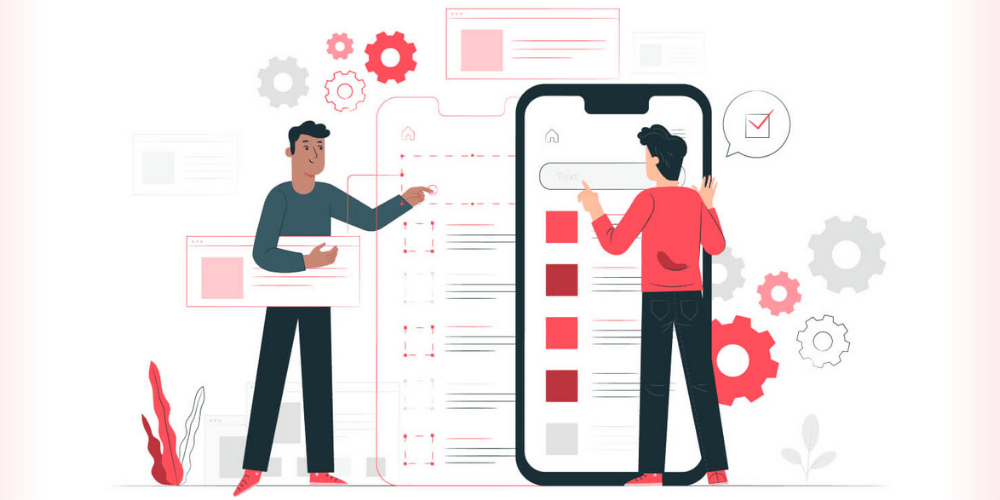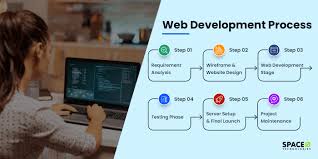
A powerful tool to spot problems in your website is usability testing. Whether you are building a brand new site or you need to improve an existing one, you need to find out how your users are using it. You can do this by asking people for their opinions on your product. This will help you decide what to change or include.
You can choose from a variety of usability testing methods to help you determine the best way to implement your project. It is important to consider the objectives, cost, time, and cost of the test. These factors must all be considered to ensure your testing results are worthwhile and can be used in your website's improvement.

You will need to collect both qualitative and quantitative information when you conduct user testing. Surveys, observation and interviews can all be used to collect qualitative data. Observation can be done in person. However, other types of research can also be done remotely. Qualified researchers should be involved in the testing process.
Surveys are a popular method of gathering quantitative and qualitative feedback. A survey can be completed by users to get their opinions about your website or app. This type of usability assessment will give you a lot of information quickly. Participants can also be asked open-ended questions to help them gain a better idea of what they think.
You can also test your users in person. You can select up to twelve testers in one session, and this allows you to get a wider perspective on your users' behavior. This method requires that you only use real humans as test subjects. Because employees are familiar with your company, your product and the process, biased results can result.
Another way to test the usability of your website is paper prototyping. This type of usability test usually requires a UX expert to conduct. During this step, the UX specialist simulates a user's interactions on your website. The UX expert then points out any potential problems that could impact your users' experience.

Another method for usability testing is session replays. These recordings capture a user's behaviour on the site. These recordings are usually not audio and don't reveal participant identities. These recordings can be used to identify the most common errors users make and how they can corrected. You can also use the recordings to pinpoint the most profitable areas of your website.
Click tracking is another method of collecting data on your users' interactions. Click tracking allows you to track how many clicks a user makes and where they are located. It can also account for the resolution of the click and the size the browser window. A click tracker is able to measure how long users take for a task to be completed and can be used as a tool to find out how often people are clicking on your website.
FAQ
What is a responsive website design?
Responsive Web Design (RWD) is an approach to designing websites where content displays responsively on all devices - desktop computers, laptops, tablets, smartphones, etc. This allows users access all features of a website, including navigation menus, buttons and buttons, on one device. RWD's goal is to ensure that users view the exact same version of a website on every screen size.
You would, for example, want to make sure that a customer can view your website even on a mobile device.
A responsive website will adapt its layout to suit the device it is being viewed on. So, viewing the site on your laptop will look like a standard desktop website. The page will look completely different if it's viewed on your smartphone.
This allows you create a website that looks great on any device.
WordPress is a CMS.
The answer is yes. It's a Content Management System. Instead of using Dreamweaver or Frontpage, a CMS lets you manage your website content directly from your web browser.
WordPress is free! Hosting, which is usually provided by your ISP, is free.
WordPress was originally designed to be a blogging platform. However, WordPress now offers many options including eCommerce sites and forums, membership websites, portfolios and portfolios.
WordPress is easy and quick to install. The installation file must be downloaded from the website and uploaded to your server. Then, you simply visit your domain name through your web browser and log in to your new site.
After installing WordPress, you'll need to register for a username and password. Once you've logged in, you'll see a dashboard where you can access all of your settings.
From here, you can add pages, posts, images, links, menus, widgets, and plugins. This step may be skipped if you feel confident editing and creating content.
You can also hire a professional web design firm to help you with the whole process.
What is Website Design Software?
Software for designing websites is used by photographers, illustrators and writers.
There are two main types: cloud-based or desktop software. Desktop apps can only be installed locally on your PC and will require additional software to run on your system. Cloud-based apps are hosted remotely on the Internet and do not require any additional software. This makes them perfect for mobile users.
Desktop Applications
Desktop applications may have more advanced features than cloud-based solutions but they aren’t always necessary. Some people prefer working exclusively on a desktop app, as they find it easier. Some people prefer to use the same tool, regardless of whether it is on a phone or a laptop.
Cloud-Based Solutions
Web designers who wish to save time or money should consider a cloud-based option. These services let you edit any type or document anywhere you have an internet connection. This means you can use your tablet to do some work while you wait for your cup of coffee to brew.
You will still need to buy a license if you choose to use a cloud-based program. You don't have to buy additional licenses for upgrading to the latest version.
If you have Photoshop, InDesign and Illustrator, these programs can be used for creating web pages.
Should I hire a web designer or do it myself?
Don't pay for web design services if you want to save money. But if you want quality results, then hiring someone else to create your website may not be worth the cost.
The truth is, there are many different ways to build websites from scratch without the need for expensive professional designers.
If you're willing to put in the time and effort, you can learn how to make a great-looking site yourself using free tools like Dreamweaver and Photoshop.
You might also consider outsourcing your project to an experienced freelance web developer who charges by the hour instead of per-project.
Can I build my website using HTML & CSS?
Yes, you can! It's possible! You need to have basic knowledge in web design and programming languages, such as HTML (Hyper Text Markup Language), CSS and Cascading Style sheets (Cascading CSS Sheets). These two languages allow you to create websites that can then be viewed by anyone who has access to your internet connection.
Can I make my website using HTML and CSS?
Yes! If you've read this far, you should now know how to create a website.
Now that you know how to create the structure of a website, you'll also need to learn some HTML and CSS coding.
HTML stands for HyperText Markup Language. It is similar to writing a recipe. It would list the ingredients, directions, and how to do it. HTML also tells a computer what parts of text should be bolded, underlined or italicized. It is the language of documents.
CSS stands for Cascading Style sheets. You can think of CSS as a style sheet for recipes. Instead of listing out each ingredient and instruction, you write down general rules for things like font sizes, colors, spacing, and more.
HTML tells the browser how to format a web page; CSS tells it how to do it.
Don't panic if either of these terms are confusing to you. Follow these tutorials, and you'll soon have beautiful websites.
How to design a site?
Your customers will first need to understand the purpose of your website. What are they looking at when they visit your site.
What issues might they be facing if they can't locate what they're looking at on your site.
Now you need to figure out how you can solve these problems. Make sure everything looks good on your website. It should be easy to use and navigate.
Your website should be well-designed. Make sure that it doesn't take too long to load. If it takes too much time, people will not stay as long as they want. They'll go somewhere else instead.
When you are building an eCommerce site, it is important to consider where all your products are located. Are they in one place? Are they scattered about your site?
You need to decide whether you want to sell one product at once or many different types of products. Are you interested in selling one type of product? Or multiple types?
Once you have answered these questions, you can begin building your site.
Now, you have to think about the technical aspects of your site. How will you site function? It will it work fast enough? Can it be done quickly by people using their computers?
Will they be able buy anything without having pay an extra fee? Is it necessary for them to register before they are able to purchase anything?
These are the essential questions you should ask yourself. These are the questions that you need to answer in order to be able move forward.
Statistics
- Is your web design optimized for mobile? Over 50% of internet users browse websites using a mobile device. (wix.com)
- Did you know videos can boost organic search traffic to your website by 157%? (wix.com)
- It enables you to sell your music directly on your website and keep 100% of the profits. (wix.com)
- At this point, it's important to note that just because a web trend is current, it doesn't mean it's necessarily right for you.48% of people cite design as the most important factor of a website, (websitebuilderexpert.com)
- The average website user will read about 20% of the text on any given page, so it's crucial to entice them with an appropriate vibe. (websitebuilderexpert.com)
External Links
How To
Drupal 7 Web Design: How to use it
Drupal is one of most well-known Content Management Systems (CMS), available today. It was developed in 2003 by Dries buytaert of Belgium. Named after the names of its two developers, Dirk Buijtewaard (from Belgium) and Pierre d'Herbemont (from France). In 2005, Drupal became open source, and since then, there are many versions of this CMS. Today, Drupal is used by many websites and companies around the world.
Drupal is popular because of many reasons. First, it is free to download and install. It is also easy to modify and expand. It is well-documented. Fourth, the forum and IRC channels offer great support. It can also be extended with modules. Sixth, it supports multiple languages. It is easy customizable. Eighth, it can be scaled. It is also secure. Tenth, it is reliable. It is also supported by the community. Drupal is the perfect choice for your next projects because of these features.
You may wonder what Drupal is different from other CMS systems. It is very simple. Drupal is an open-source content administration system. Drupal is completely free and can be downloaded freely. Drupal gives you full control over your website. You have complete control over your website. You can add or delete pages.
Drupal is the best option if you lack technical skills but want to build a website. Drupal, unlike other CMS, doesn't require you to know programming to build your website. To use Drupal, you only need to understand the basics. You will then be able modify your website to suit your needs.
Drupal has many themes and plugins that are already pre-built. These plugins help you to enhance your site's functionality. You can use the Contact Form module, for example, to collect visitor contact information. Google Maps can be used to display maps on your site. Drupal comes with many ready-made templates. And these templates give your website a professional look.
Drupal's flexibility is another advantage. Drupal supports many different modules, so you can easily add or remove them from your website without worrying about compatibility. If you are looking to integrate social networks into your website, this is possible quickly. You can also set-up RSS feeds, email subscriptions, etc.
Drupal is extremely customizable. You can add custom fields and forms, manage users, and more. Drupal is capable of creating complex layouts.
Drupal is also reliable and sturdy. Drupal is both stable and scalable. It has excellent security features. Drupal is a solid web development platform.